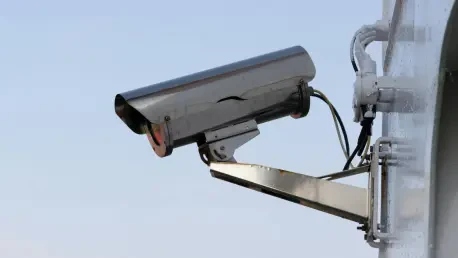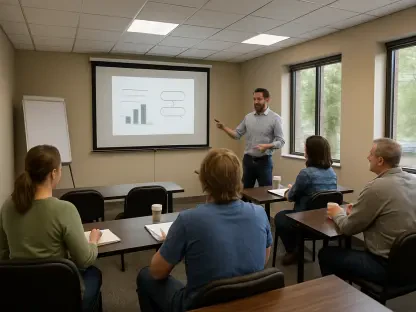In a series of impactful decisions that underscore a commitment to community well-being, the Pulaski County Board of Supervisors in Virginia has taken significant steps to address both public safety and financial challenges during their recent September meeting. As detailed in a report by William Paine in Patriot Publishing, the board’s agenda was packed with resolutions aimed at protecting residents and fostering local growth. Among the headline actions were the approval of speed cameras in school zones to curb dangerous driving and the endorsement of a new opioid settlement with pharmaceutical companies to secure vital funds for recovery efforts. These measures reflect a broader strategy to tackle pressing issues with innovative tools and legal avenues. This article delves into the key outcomes of the meeting, exploring how Pulaski County is paving the way for a safer, more resilient future through thoughtful governance and strategic partnerships with various stakeholders.
Enhancing Safety with Innovative Measures
The decision to install speed cameras near public schools stands out as a critical move to protect students and pedestrians in Pulaski County. Collaborating with Blue Line Solutions and the Pulaski County Sheriff’s Office, these cameras will monitor traffic on roads maintained by the Virginia Department of Transportation (VDOT) around every public school. The primary goal is to deter speeding during peak school hours when children are most vulnerable. Importantly, fines issued through this system are designed to avoid impacting a driver’s insurance or adding points to their license unless the citation is contested and lost in court. County Attorney Tim Kirtner and County Administrator Jonathan Sweet emphasized this balance of enforcement and fairness, ensuring that the focus remains on safety rather than punitive measures. This initiative represents a forward-thinking approach to leveraging technology for community protection, addressing a long-standing concern in areas with high pedestrian activity.
Beyond traffic safety, Pulaski County’s dedication to inclusive emergency preparedness was recognized with an achievement award from the Virginia Association of Counties (VACO) for its Sensory Emergency Kit initiative. These kits, now equipped in all county ambulances, are tailored to assist neurodivergent individuals, children, the elderly, and dementia patients during crises. Featuring stress-relief tools and distractors, the kits address unique sensory needs that are often overlooked in standard emergency responses. Assistant Chief for EMS Mike Garnett highlighted the transformative impact of this program, which positions the county as a leader among rural communities in specialized care. The recognition from VACO not only validates the county’s innovative efforts but also sets a benchmark for other localities to follow in creating more inclusive safety protocols. This dual focus on traffic and emergency response underscores a comprehensive approach to safeguarding all residents.
Securing Resources through Legal and Financial Strategies
A notable financial resolution came with the board’s vote to participate in a second opioid settlement against eight pharmaceutical companies, a decision guided by County Attorney Tim Kirtner. By joining forces with other localities and engaging outside counsel, Pulaski County aims to secure funds that will bolster local programs for opioid recovery and prevention. This legal action is part of a wider movement to hold pharmaceutical entities accountable for their role in the ongoing crisis, while also providing much-needed resources to affected communities. Although specific settlement amounts remain undisclosed, the collective benefit for participating areas signals a strategic win for public health funding. This step highlights how legal avenues can serve as powerful tools for addressing systemic issues, ensuring that financial relief reaches those most impacted by the epidemic.
Equally significant is the county’s effort to preserve cultural heritage through a Community Development Block Grant (CDBG) proposal for the Wilderness Road Regional Museum. John Crockett, the Community Development Project Manager, outlined plans for a $75,000 grant to match prior funding from the Appalachian Regional Commission, totaling $150,000. These funds will support essential planning documents, historic structure assessments, repairs, and the creation of a website with interactive mapping for public engagement. With Pulaski County acting as the fiscal agent, this initiative reflects a commitment to safeguarding historical assets while embracing modern digital tools to connect with the community. The museum project not only preserves the county’s rich history but also positions it as a cultural hub, blending tradition with forward-looking economic planning for sustained local benefit.
Navigating Traffic and Infrastructure Priorities
Traffic management emerged as a central theme during the meeting, with the supervisors scheduling a public hearing on October 27 to consider prohibiting large truck traffic on a 1.18-mile section of Old Giles Road in Dublin. The proposed rerouting via nearby ramps on Route 100 aims to reduce wear on local roads and enhance safety for residents, even though it adds a slight detour to truck routes. Additionally, the temporary closure of a mile of Wilderness Road in Newbern for the Newbern Fall Festival on October 11-12 demonstrates a willingness to prioritize community events over regular traffic flow. These decisions illustrate a nuanced approach to infrastructure management, where safety and local traditions are weighed against the practical needs of transportation. The board’s focus on such measures reveals an intent to maintain accessible, well-preserved roads while accommodating the county’s vibrant cultural calendar.
Resident concerns about traffic safety also received attention, particularly from Heather Huff of Fairlawn, who voiced frustration over persistent speeding on Madison Street near the Smith Farm on the New River. Despite assurances of patrols from multiple law enforcement agencies, enforcement appears lacking, prompting the supervisors to commit to a thorough investigation. Meanwhile, VDOT representative David Clark provided updates on interstate construction along I-81, including southbound offramp closures at Exit 94 and emergency bridge repairs at Exit 89, which affect access to key routes. These ongoing projects highlight the challenges of maintaining critical infrastructure while minimizing disruptions to daily travel. The board’s responsiveness to both citizen input and large-scale construction issues showcases a dedication to balancing immediate safety concerns with long-term accessibility planning for all who rely on the county’s roadways.
Fostering Community Growth and Engagement
Community development took a prominent spot on the agenda, with updates from Pulaski On Main (POM) shedding light on thriving local initiatives. Project Coordinator Sarah Alderman reported on the success of the Tuesday afternoon Marketplace at the Pulaski Train Depot, which engaged over 30 vendors and generated more than $30,000 in revenue. With a third of these vendors hailing from the county and some receiving assistance to obtain business licenses, POM’s efforts are clearly boosting local entrepreneurship. Furthermore, the Music and Merchants summer event saw a remarkable 1,000-visitor increase compared to the prior year, fueled by a growing social media presence. POM’s advancement to the Mobilizing Main Street tier with Virginia Main Street also opens doors to board training and potential grant funding, promising even greater community impact. These achievements reflect a dynamic partnership between county leadership and local organizations in driving economic vitality.
Adding to the cultural momentum, the Fine Arts Center for the New River Valley (FAC) expressed gratitude for the supervisors’ support of the Rhythm by the Rails event, which drew over 800 attendees with music, artist demonstrations, and children’s activities. Representatives John Ross and new Executive Director Brandon Phillips emphasized the event’s role in uniting the community through creative expression. Such initiatives, backed by the county, not only enrich local life but also strengthen social bonds, creating a sense of shared identity and pride. The combined success of POM and FAC programs points to a robust strategy for engagement, where cultural and economic growth go hand in hand. This focus on community-driven projects ensures that Pulaski County remains a place where residents can thrive through active participation in events that celebrate their heritage and talents.
Reflecting on a Path Forward
Looking back at the September meeting of the Pulaski County Board of Supervisors, it became evident that a multifaceted approach to governance had been effectively implemented. The approval of speed cameras in school zones and the recognition of the Sensory Emergency Kit initiative marked significant strides in public safety. Financial strategies, including the opioid settlement and museum grant, provided essential resources for recovery and cultural preservation. Traffic decisions and infrastructure updates addressed immediate resident concerns while planning for long-term accessibility. Community engagement through local events further solidified the county’s vibrant spirit. Moving forward, continued collaboration with technology partners, legal teams, and community organizations will be crucial to sustain this momentum. Exploring additional grants and innovative safety measures could further enhance these efforts, ensuring Pulaski County remains a model of rural leadership in addressing diverse needs with precision and care.








